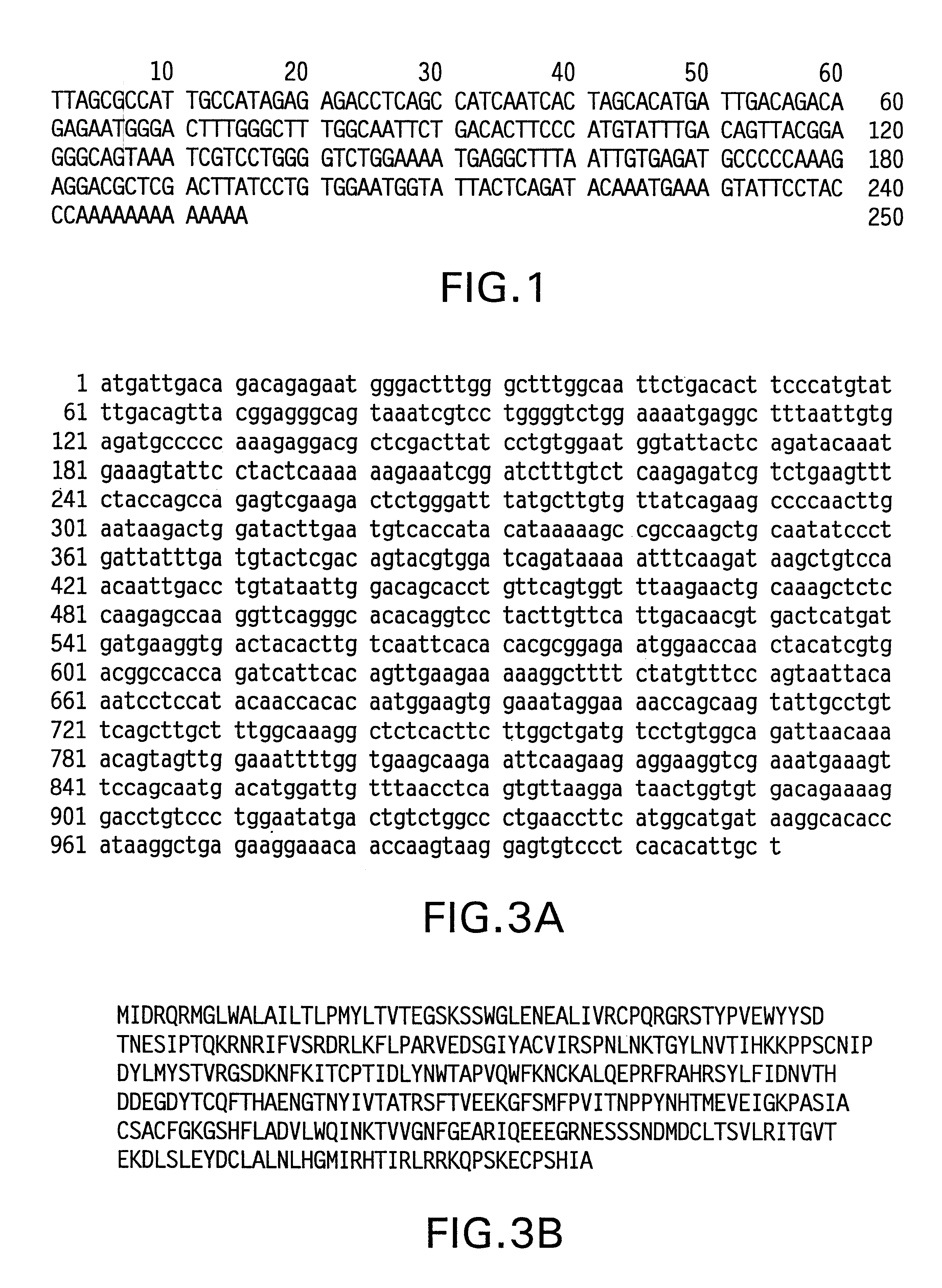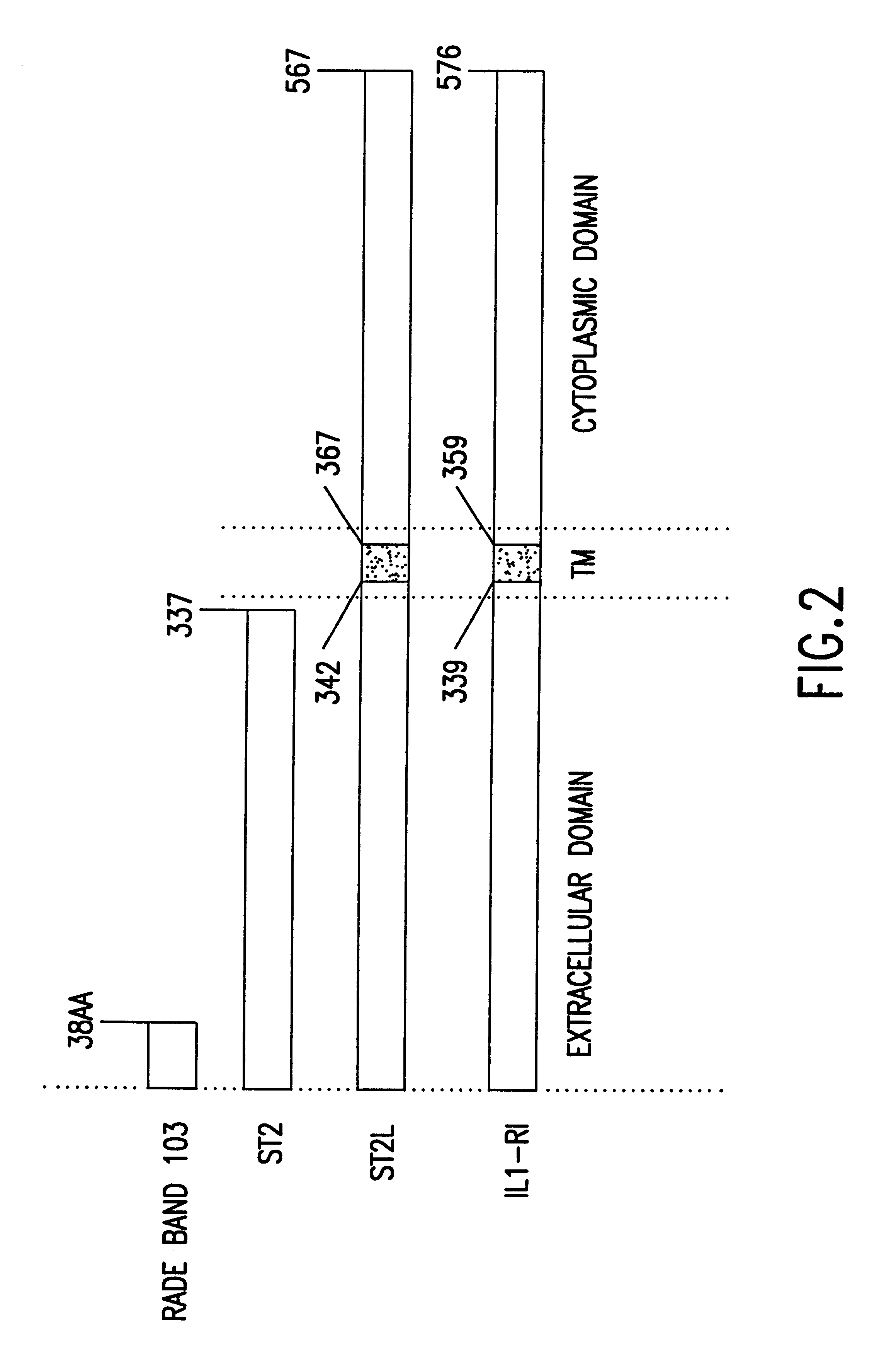Nucleic acid molecules encoding a 103 gene product and uses therefor
a technology of nucleic acid molecules and gene products, applied in the field of immune disorders, can solve the problems of insufficient immune response, inability to control or resolve an infectious process, inappropriate response, etc., and achieve the effects of reducing or increasing reducing the number of th2, and reducing the number of th2
- Summary
- Abstract
- Description
- Claims
- Application Information
AI Technical Summary
Benefits of technology
Problems solved by technology
Method used
Image
Examples
Embodiment Construction
Methods and compositions for the treatment (e.g., amelioration of symptoms), prognosis and diagnosis of immune disorders, especially TH cell subpopulation-related disorders are described herein. The inmmune disorders include, but are not limited to, chronic inflammatory disease and disorders (e.g., Crohn's disease, reactive arthritis, and Lyme disease), insulin-dependent diabetes, organ specific autoimmunity (including, e.g., multiple sclerosis, Hashimoto's thyroiditis and Grave's disease), contact dermatitis, psoriasis, graft rejection, graft versus host disease, sarcoidosis, atopic conditions (e.g., asthma and allergy including, but not limited to, allergic rhinitis and gastrointestinal allergies such as food allergies), eosinophilia, conjunctivitis, glomerular nephritis, systemic lupus erythematosus, scleroderma certain pathogen susceptibilities such as helminthic (e.g., leishmaniasis) and certain viral infections (including HIV and bacterial infections such as tuberculosis and l...
PUM
| Property | Measurement | Unit |
|---|---|---|
| Angle | aaaaa | aaaaa |
| Antigenicity | aaaaa | aaaaa |
Abstract
Description
Claims
Application Information
 Login to View More
Login to View More - R&D
- Intellectual Property
- Life Sciences
- Materials
- Tech Scout
- Unparalleled Data Quality
- Higher Quality Content
- 60% Fewer Hallucinations
Browse by: Latest US Patents, China's latest patents, Technical Efficacy Thesaurus, Application Domain, Technology Topic, Popular Technical Reports.
© 2025 PatSnap. All rights reserved.Legal|Privacy policy|Modern Slavery Act Transparency Statement|Sitemap|About US| Contact US: help@patsnap.com



